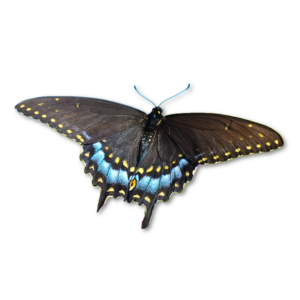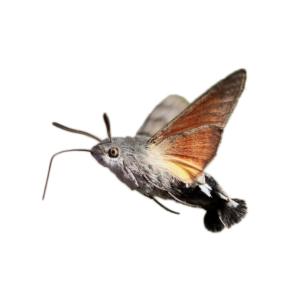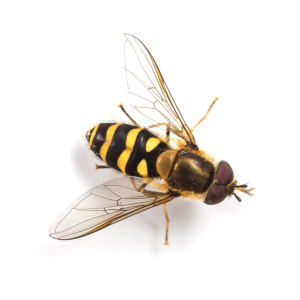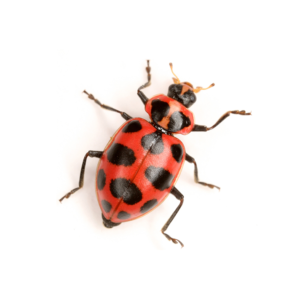Moths
Moths are part of the order Lepidoptera (scaly wing) which also includes butterflies and skippers. There are 1,850 species of Lepidoptera in the state of Illinois, a majority of which (around 1700 species) are moths.
Like butterflies they will visit flowers to feed on nectar. However, their pollination services are often overlooked since they are primarily active at night.
Moths like clustered flowers that are open-cup or tubular in shape. They also tend to like pale flowers which are easy targets in dim light. Not all moths drink nectar; some adults drink liquids from decaying plants and some drink nothing at all—they live exclusively on the food they ate as caterpillars.
Like butterflies, the larvae (caterpillars) have chewing mouth parts and feed mostly on plants. Caterpillars can have up to five sets of fleshy appendages on their abdomens called prolegs with hooks on the end called crochets.
While butterflies are often brightly colored, moths tend to be more drab. Since most moths are most active at night there is no need to have bright color to attract mates. Instead, they use their coloring to camouflage themselves during daytime.
Moths are also covered in scales; however, they tend to have more scales, giving them a fuzzy appearance. Because they tend to fly at night, they are unable to use the sun to warm their bodies. Instead, they generate heat by vibrating their muscles and their scales help to insulate them and prevent heat loss.
How to tell the difference between butterflies and moths
- Moth bodies are usually stout and hairy as opposed to butterflies that have more slender bodies and longer legs.
- Moth wings have a structure called a frenulum which joins the forewing to the hind wing.
- Butterflies have clubbed antennae, while moth’s antennae can be stout, feathery, or bristly.
- Adult moths have a propensity to spread their wings when they land – butterflies often fold their wings
- Moths spin silk cocoons for their pupae stage of life while butterflies form a chrysalis from their outer layer of skin
Illinois moths
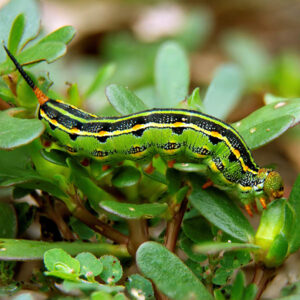
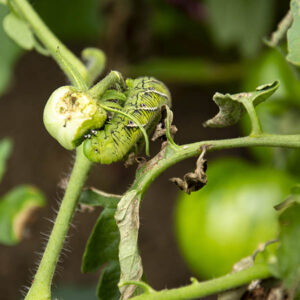
Sphingidae Family (sphinx moth, hawkmoth)
Sphinx moths are excellent fliers and can hover over flowers much like hummingbirds. They possess a very long, tube-like mouth (called a proboscis) to reach nectar in deep flowers. Some species lack scales on their wings, resulting in transparent or clear wings. In most species, the larval stage is called a “hornworm.” Most, but not all, sphinx moths fly at night. A common species, the whitelined sphinx moth, flies during the day and is often spotted by gardeners at dusk and dawn.
Arctiinae Subfamily (tiger moths, wasp moths)
Tiger moths often have striking and distinctive wing coloration. Despite this, the group is more commonly known by the peculiar “wooly bear” or “wooly worm” larvae of some species which can be seen crossing country roads in the late summer. Tiger moth caterpillars feed on a vast range of plants such as apple, cherry, dandelion, grass, oak, sunflower, violet, and walnut, to name a few. The adults visit flowers for nectar.
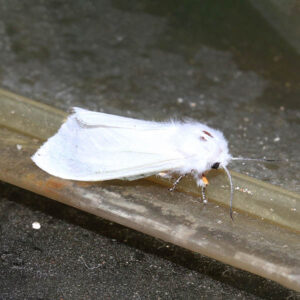

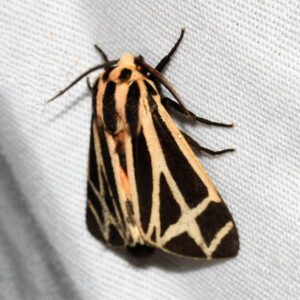
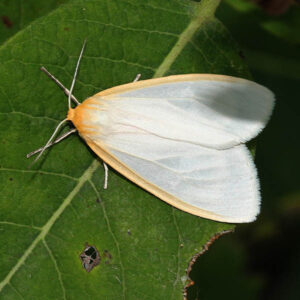
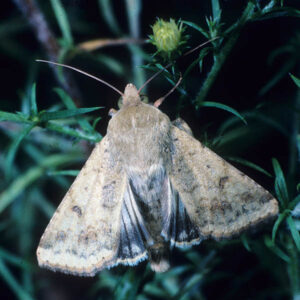
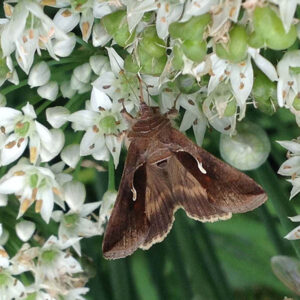
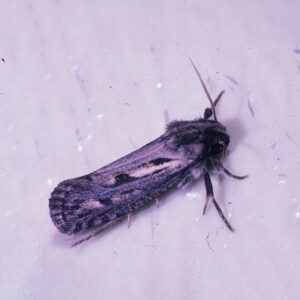
Noctuidae family (owlet moths)
Owlet moths have a bad reputation since a few members of the family—the cutworms and armyworms—are unparalleled agricultural pests. Thankfully, only a few Noctuids are such troublesome pests. As adults, Noctuids commonly visit goldenrods, asters, rudbeckia, gaillardia, witchhazel and columbine. In addition to feeding on nectar, owlet moth adults will feed on plant sap and rotting fruit. Broadly speaking, owlet moths tend to be small in size and brown or gray in color, making it difficult to tell one species from another. There are, however, exceptions, such as certain species that take on the appearance of bird droppings to fool predators



